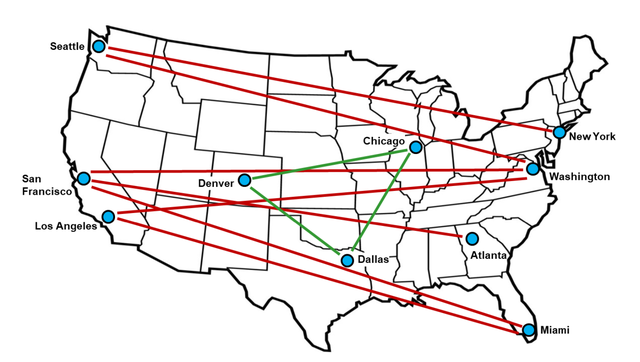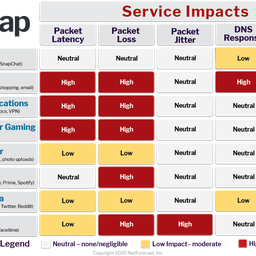The NetForecast 2020 Internet Latency Benchmark Report scores and ranks Internet latency performance across major US cities and ISPs. Drawing on RIPE Atlas, the report provides a “user's eye” perspective on performance in terms of latency, latency consistency, and near/far latency bias.
In February of 2020, NetForecast undertook a comprehensive study of latency and loss involving ten major metropolitan areas in the continental United States. The report is based on 60 million latency measurements collected with RIPE Atlas probes from March through December 2020. As a RIPE Atlas user and ambassador, NetForecast found RIPE Atlas an ideal platform to collect data for our analysis.
Our data analysis showed that, during the test period, Comcast and Verizon delivered the best overall Internet Service Provider (ISP) performance among the five ISPs measured, and Atlanta and Washington experienced the best overall performance among the ten cities measured. The study analysed latency and loss using ping measurements within a metro area (near), and between distant metro areas (far). Near and far measurements model the typical Internet user’s experience, with content delivered from near sources like Content Delivery Networks (CDNs), and far sources like remotely located business or educational servers. This map shows the organisation of the near metro areas represented by blue circles, and far tests represented by red and green lines.

For further details about the methodology and results, see the full report: NetForecast website.
How We Used RIPE Atlas
Many features of the RIPE Atlas system proved extremely helpful in gathering the measurements. NetForecast used the RIPE Atlas API exclusively to survey and select the probes used in the report. The API provided information about the approximate location and identified the ISP servicing the probes, thus allowing NetForecast to meet the selection criteria for distance to the centre of each metro area geographic area, and to provide a statistically valid coverage for all of the ISPs included in the report.
NetForecast developed proprietary code to select probes, take the measurements, update the probe lists over time, and import the results for analysis. Cloud-based services ran tasks on both an hourly and daily basis to import and analyse the measurement results. The automated analysis of this data is available for the last 48 hours on the NetForecast website.
The targets of the measurements include both RIPE Atlas anchors and high-capacity servers located in major data centres in each metro area. These targets have proven to provide reliable and consistent results.
Utilising the data collected, NetForecast was able to glean many valuable insights into the performance of these networks over the initial test period. Three major performance factors were derived from the results and used to benchmark the cities and ISPs: latency and loss; consistency of latency across time; and balance between quality of user experience over near and far network paths. In order to combine these factors, Apdex methodology was applied. Apdex provides a rating from 0 to 1 for each performance factor, which we then combined into an overall benchmark score.
The extensive capabilities of the RIPE Atlas API, the availability of RIPE Atlas probes in all of the target areas, the availability of the RIPE Atlas anchors as targets, and the ability to collect and analyse results, provide an excellent environment for this type of study. NetForecast will continue this study into the future, publishing quarterly benchmark report updates.
We look forward to continuing this research, and also drawing new insights about Internet performance from data we continuously collect using the RIPE Atlas system.



Comments 0
The comments section is closed for articles published more than a year ago. If you'd like to inform us of any issues, please contact us.